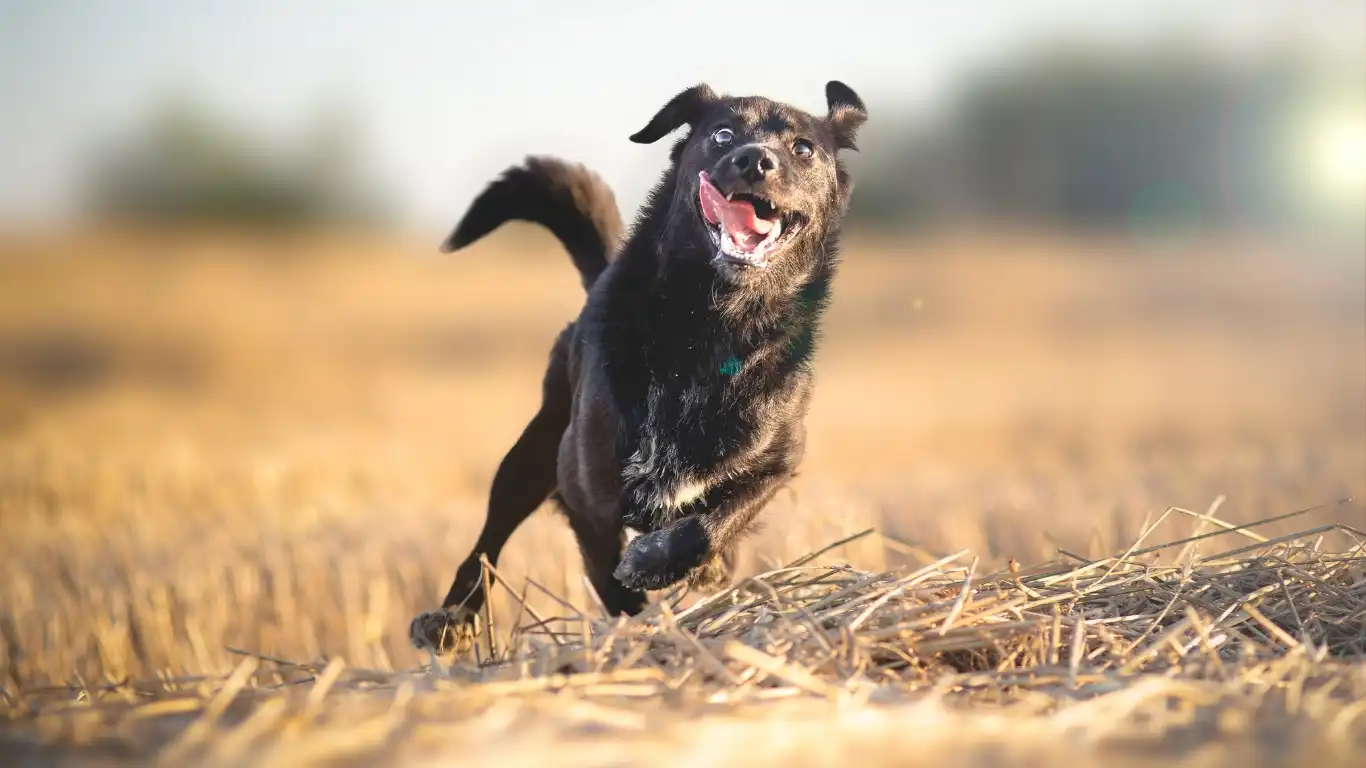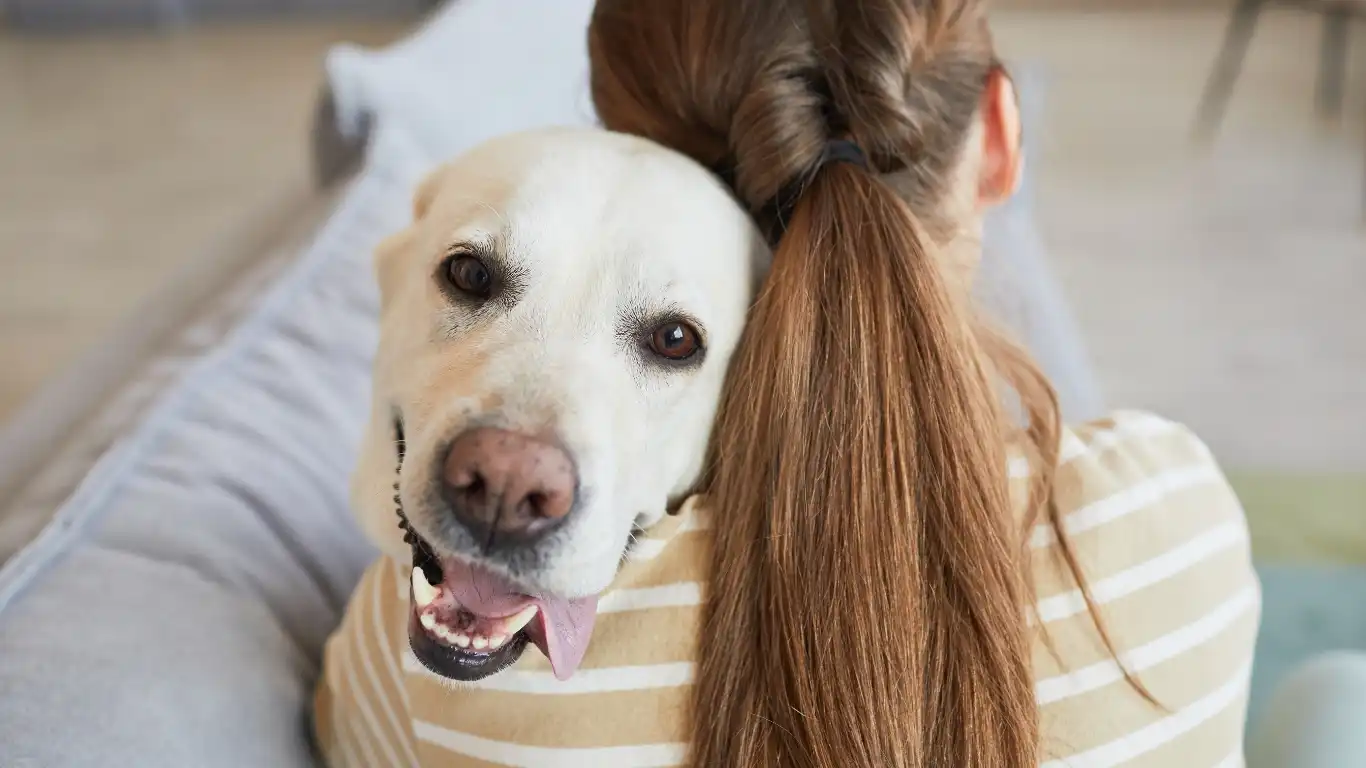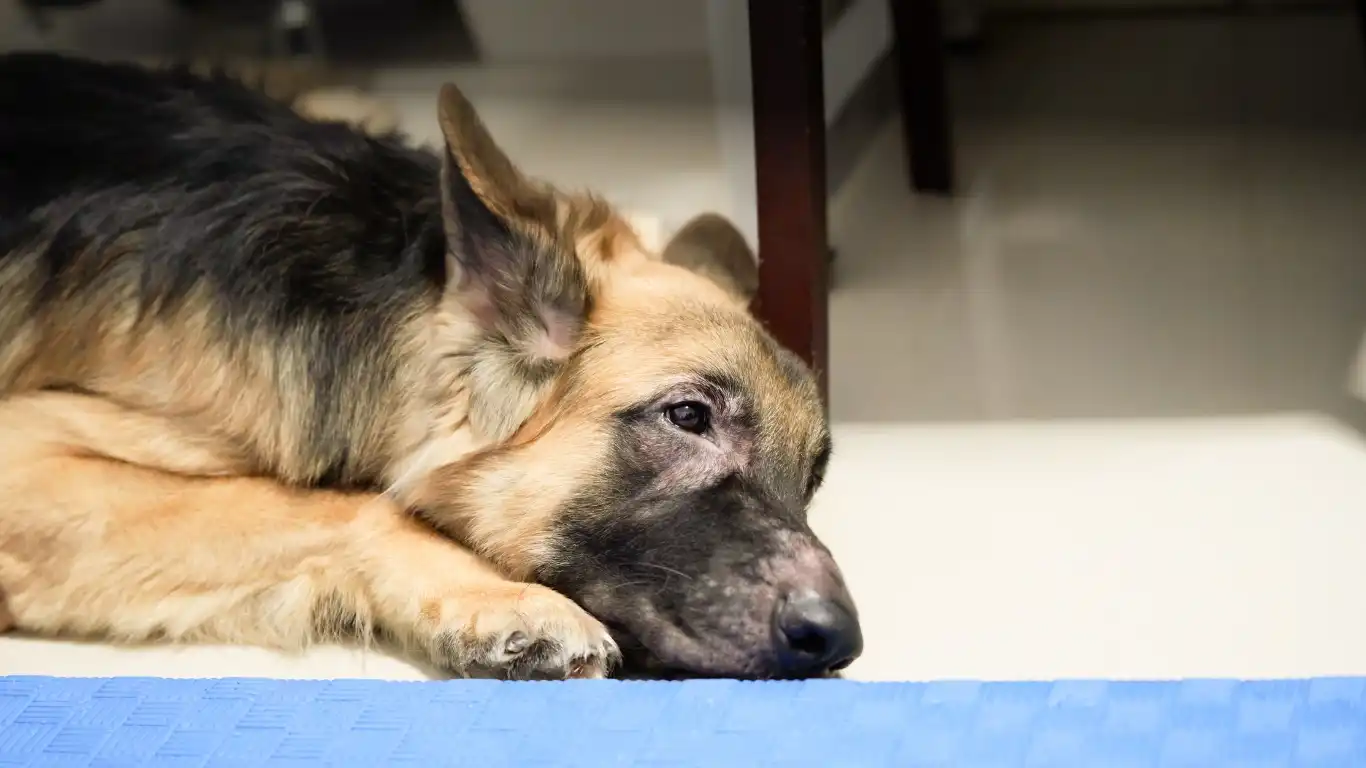Ultimate Guide on How to Get a Picky Dog to Eat Their Food
Getting your picky dog to eat their food can feel like an endless battle. If you’re a pet parent, you know that the struggle is real when it comes to meal times. You’ve tried everything—different flavors, brand-new bowls, and even hand-feeding your pup. But no matter what you try, your dog still turns their nose up at mealtime. Don’t worry, you’re not alone. As a veterinary technician specializing in nutrition, I’ve worked with countless pet owners who face this very issue. So, let’s dive into how to get a picky dog to eat their food and some tried-and-true methods that can help solve the problem.
Understanding Why Your Dog is Being Picky

Before we jump into solutions, it’s essential to understand why your dog might be picky. Dogs, just like people, can be selective eaters, but there are several reasons why your pup might be avoiding their meals. As a veterinary technician, I’ve seen firsthand how different factors contribute to a dog’s reluctance to eat.
Medical Conditions
Sometimes, the issue isn’t about the food at all. Health issues such as dental problems, gastrointestinal distress, or even more serious conditions like kidney disease or infections can make eating uncomfortable or even painful for your dog. It’s important to rule out any underlying medical issues before assuming your dog is just being difficult. If your dog is consistently avoiding food or showing signs of discomfort, it’s a good idea to consult with a veterinarian for a full check-up.
Changes in Environment or Routine
Dogs thrive on routine, and any change in their environment or daily schedule can lead to stress, which can affect their appetite. Maybe you moved homes, brought a new pet into the house, or even experienced a big change in your work schedule. Dogs are sensitive creatures, and even subtle changes in their environment can make them hesitant to eat. Keep an eye out for patterns or triggers that coincide with your dog’s pickiness and see if there’s a correlation.
Food Preferences or Sensitivities
Just like humans, dogs have their own food preferences. Some dogs simply don’t like the flavor or texture of certain foods. Others may have food sensitivities that cause discomfort or allergic reactions, making them avoid their meals. If you’ve been feeding your dog the same food for a while, it might be time to try something new. But be careful—if you do decide to change your dog’s diet, do so gradually to avoid upsetting their stomach.
How to Encourage Your Picky Eater

Now that we’ve covered why your dog might be picky, let’s look at some practical tips on how to get your dog to eat their food. These tips can help encourage your dog to develop a healthier relationship with mealtime and ensure they’re getting the nutrition they need.
1. Stick to a Consistent Feeding Schedule
Dogs are creatures of habit, so having a consistent feeding schedule can make a huge difference. I can’t tell you how many times I’ve seen picky dogs start eating better once their feeding times become predictable. Try to feed your dog at the same time every day and keep the environment calm and quiet during mealtime. This routine will help your dog associate food with a sense of security.
2. Experiment with Food Toppers or Mix-ins
If your dog’s not thrilled with their food, try adding some excitement with food toppers or mix-ins. You can use low-sodium broth, plain cooked chicken, or a little bit of peanut butter (ensure it doesn’t contain xylitol, which is toxic to dogs). Sometimes a sprinkle of cheese or a dollop of pumpkin can make a big difference. But be mindful not to overdo it—these additions should be used sparingly and should complement your dog’s regular diet, not replace it.
3. Make Mealtime Fun and Interactive
Dogs love to work for their food. You can make mealtime more engaging by using puzzle feeders or interactive toys that require your dog to work a bit to get their meal. This adds an element of fun and challenge to the process, which can help stimulate their appetite. I’ve seen dogs that were once picky eaters turn into enthusiastic diners when presented with a challenge!
4. Try a Different Type of Food
Sometimes, the issue lies with the food itself. If your dog is picky about dry kibble, consider switching to wet food or raw food. Wet food tends to have a stronger aroma, which can attract dogs who are hesitant to eat dry food. However, it’s important to introduce any new food gradually to prevent stomach upset. If you’ve been using the same food for a long time, it could be time for a change. Just be sure to consult your veterinarian before making significant changes to your dog’s diet.
5. Avoid Free Feeding
Free feeding, where food is left out all day for your dog to eat whenever they please, can sometimes lead to pickiness. When food is constantly available, your dog might not feel the need to eat when it’s time for a meal. Instead, try offering food at set times during the day and take away the bowl after 20–30 minutes if it’s not eaten. This encourages your dog to eat at mealtime rather than grazing throughout the day.
Understanding Your Dog’s Appetite

Every dog is different, and what works for one might not work for another. However, patience and persistence are key when it comes to helping your dog develop a healthy eating routine. Keep in mind that while picky eating can be frustrating, it’s often just a phase or a behavior that can be corrected with the right approach.
If you’ve been working with your picky eater and haven’t seen results yet, don’t lose hope. Sometimes, it just takes a little time to find the right combination of food, schedule, and environment that works for your dog. And always remember, if you’re concerned about your dog’s health or eating habits, it’s always a good idea to consult with your veterinarian for personalized advice.
How to Identify and Address Behavioral Issues in Picky Eaters

Sometimes, a picky eater isn’t just about food preferences or health issues—it can be behavioral. Just like humans, dogs can develop certain eating habits that are difficult to break. As a veterinary technician, I’ve often worked with pet owners to address these behavioral issues and help their dogs overcome their reluctance to eat. If your dog is not eating due to behavioral reasons, it can take a bit more effort, but with the right approach, you can get your pup back on track.
Understanding the Root Cause of the Behavior
It’s important to look at the bigger picture when your dog refuses to eat. Sometimes the behavior stems from anxiety, stress, or even a bad experience with food. Have there been times when your dog had a bad experience while eating? Maybe they were scared by loud noises or a sudden change in their environment during mealtime. These negative experiences can create an association with food that your dog tries to avoid.
Other dogs may develop food-related anxiety due to competition with other pets in the household. If you have multiple pets and one of them is particularly dominant or aggressive at mealtime, your picky dog might shy away from eating altogether. In such cases, feeding your dogs in separate rooms or using puzzle feeders might help alleviate some of the stress.
Reassurance and Positive Reinforcement
Positive reinforcement is key when it comes to changing behavior. If your dog is acting picky because of anxiety or fear, offering reassurance can help build a positive association with food. Don’t scold your dog for not eating; instead, try to make mealtime an enjoyable and calm experience. Praise them when they take even the smallest bite, and consider rewarding them with a treat afterward. This will gradually reinforce that eating is a positive activity.
One thing I always tell pet owners is to be patient and consistent. I know it’s easy to get frustrated, but dogs thrive on consistency. If your dog is hesitant, give them time, and don’t force the food. Over time, with positive reinforcement and a calm, stress-free mealtime environment, your dog will likely start eating more regularly.
Nutrition and Diet Adjustments for Picky Eaters

Aside from behavioral changes, sometimes the picky eating habits can be tied to nutritional needs. If your dog is regularly turning their nose up at their food, it might be time to reevaluate the quality and type of food you’re offering. In my experience, many picky eaters simply aren’t getting the proper nutrients they need, or the food they’re being given doesn’t appeal to their taste buds.
High-Quality Ingredients Make a Difference
Just like us, dogs are more likely to enjoy their meals if the ingredients are of high quality. If you’ve been feeding your dog food with a lot of fillers and artificial additives, it could be a turn-off. Dogs have a heightened sense of smell, and if the food doesn’t smell appealing, they might not want to eat it. Opt for high-quality dog food brands that focus on natural, whole ingredients. Look for foods that have meat listed as the first ingredient, and avoid those that list corn, soy, or wheat as their primary ingredients.
Personally, I’ve seen dogs make a dramatic turnaround once they switched to a diet that better suited their nutritional needs. The key is to find a balance of protein, fats, and carbohydrates that works for your dog’s breed, size, and health status. Your veterinarian can help guide you on what type of diet is best for your picky eater.
Consider Fresh, Homemade Meals
If your dog continues to refuse their commercial food, it may be worth trying fresh, homemade meals. Many dog owners I’ve worked with have found that their dogs are much more interested in food that’s made at home, as it’s often more aromatic and flavorful. Of course, it’s important to work with a veterinarian or pet nutritionist to ensure that you’re providing a balanced, nutritionally complete homemade diet. If not prepared correctly, homemade meals could lack essential vitamins and minerals, which can lead to health issues in the long run.
Adding variety to your dog’s diet by offering fresh foods like lean meats, vegetables, and grains (in moderation) can be an excellent way to tempt your picky eater. Just remember to avoid foods that are toxic to dogs, such as onions, garlic, chocolate, grapes, and raisins.
Consulting a Veterinarian or Pet Nutritionist
If you’ve tried everything and your dog’s pickiness persists, it might be time to consult with a professional. A veterinarian can help rule out any underlying health issues and provide guidance on nutrition and feeding strategies. Some picky eaters might even have sensitivities to specific ingredients that are hard to identify without professional help. A pet nutritionist, on the other hand, can work with you to create a customized feeding plan that caters to your dog’s specific needs.
I’ve worked with clients who were initially at a loss, but after seeking professional advice, their dogs’ eating habits drastically improved. There’s no shame in asking for help—sometimes, a fresh perspective can uncover solutions that you might have missed on your own.
Creating a Stress-Free Mealtime Environment

One of the most overlooked aspects of getting a picky dog to eat is the environment where they eat. Dogs are incredibly sensitive to their surroundings, and a stressful or chaotic mealtime setting can discourage them from eating altogether. If your dog’s eating habits have become problematic, consider the environment where they are eating and make adjustments to create a more peaceful, calming atmosphere.
Reduce Distractions During Mealtime
If your home is busy or noisy, try moving your dog’s food bowl to a quieter area. Whether it’s a separate room or a corner where they won’t be disturbed, making mealtime a more serene experience can help your dog feel more comfortable and less distracted. Avoid engaging in play or loud conversations while your dog is eating, as this can create anxiety or make them lose focus on their meal.
Establish a Calm Routine
Establishing a calm pre-meal routine can also work wonders. Take a few minutes before mealtime to help your dog relax. This could be a short walk, some quiet petting, or simply allowing them to sit down for a moment in a calm space before you present their food. Just like humans, dogs need to wind down, and this quiet time can help ease them into a more positive eating experience.
When to Seek Professional Help for Your Picky Eater

As we’ve discussed in the previous sections, there are many ways to approach picky eating behaviors in dogs. But sometimes, despite your best efforts, your dog’s pickiness persists. This can be frustrating, especially if you’ve tried different strategies and adjusted their diet and environment. If you’re feeling stuck, it might be time to seek professional help. Don’t be afraid to reach out to a veterinarian or a pet nutritionist—they’re there to support you and your dog in finding the best solutions.
Consulting a Veterinarian
When your dog’s picky eating habits go on for longer than you expect, it’s important to check in with your veterinarian. If you haven’t already ruled out medical issues, a thorough exam is a good starting point. Your vet can look for signs of underlying health problems that could be contributing to the lack of appetite, like digestive disorders, parasites, or even something more serious like liver or kidney disease.
Even if your dog isn’t showing any other symptoms, a professional evaluation can give you peace of mind and guide you in the right direction. Sometimes picky eating is a subtle sign of discomfort, and your vet can help you identify and address it early. I’ve personally worked with many pet owners who were concerned about their dogs’ eating habits, only to discover that a minor health issue was at the root of it. After treatment, the dogs were eating just fine again.
Seeing a Pet Nutritionist
If your dog’s diet continues to be a challenge despite your best efforts, working with a pet nutritionist can be a game-changer. Pet nutritionists are experts in designing balanced diets specifically tailored to your dog’s individual needs. They can help you figure out whether your dog’s food is nutritionally complete or if there are gaps in their diet that might be causing them to avoid meals.
Sometimes, dogs are simply picky because their diet doesn’t meet their preferences or nutritional requirements. A nutritionist can work with you to create a meal plan that encourages healthy eating while ensuring your dog is getting all the nutrients they need. I’ve found that dogs who receive customized feeding plans often show significant improvements in their appetite and overall health. It’s well worth considering if you’ve hit a wall with your dog’s pickiness.
Long-Term Strategies for Maintaining Healthy Eating Habits

Once you’ve tackled your dog’s picky eating habits, the next step is maintaining healthy eating habits for the long haul. Just like any other aspect of dog care, it’s important to ensure that your dog continues to have a positive relationship with food. This involves sticking with the right routine, keeping mealtimes stress-free, and making sure their nutritional needs are being met.
Maintaining a Consistent Feeding Schedule
Consistency is key when it comes to feeding your dog. Whether your dog has overcome their pickiness or not, sticking to a regular feeding schedule is one of the best ways to ensure they maintain a healthy eating routine. Dogs do best when they know what to expect, so try to feed them at the same times each day, and keep the environment calm and quiet during meals.
In my experience, dogs that are fed consistently tend to have better appetites. They start associating food with regularity, which helps build a positive eating habit over time. If you change their feeding schedule too frequently, it can confuse them and lead to more food refusal. So, keep a steady rhythm, and your dog will likely settle into their eating routine.
Offer a Variety of Food Options
Just like humans, dogs can get bored with the same old thing. While consistency is important, offering a bit of variety in your dog’s diet can keep them interested in their meals. You can rotate different flavors or types of food—such as mixing dry food with wet food, or introducing occasional treats that complement their diet.
However, it’s essential to avoid sudden changes, as these can upset your dog’s stomach. Introduce any new food gradually and observe how your dog reacts. It’s all about striking a balance between consistency and variety. A little variety goes a long way in keeping your dog excited for mealtime!
Watch for Signs of a Relapse
Even if your dog has overcome their picky eating habits, it’s crucial to stay vigilant and monitor their eating patterns. If you notice any signs of a relapse—such as decreased appetite, refusal to eat, or changes in their behavior around food—don’t ignore it. It might be a sign that something is off, either physically or behaviorally. Early intervention can help prevent issues from escalating.
Just like us, dogs can have their ups and downs when it comes to appetite, so stay in tune with their needs. If you notice changes, consider revisiting the strategies that worked before or consult your vet for advice.
Additional Resources
If you’re looking for more information on your dog’s eating habits and how to address picky eating, here are some trusted resources:
- PetMD: Picky Eater Dogs
- American Kennel Club: Dog Health & Nutrition
- National Institutes of Health (NIH): Canine Health
Disclaimer
The information provided in this article is intended to help dog owners understand and address picky eating behaviors in their pets. However, every dog is unique, and what works for one dog may not work for another. If your dog’s picky eating persists or if you are concerned about your dog’s health, please consult with a veterinarian or a certified pet nutritionist for personalized guidance. This article is not intended as a substitute for professional veterinary advice, diagnosis, or treatment.





